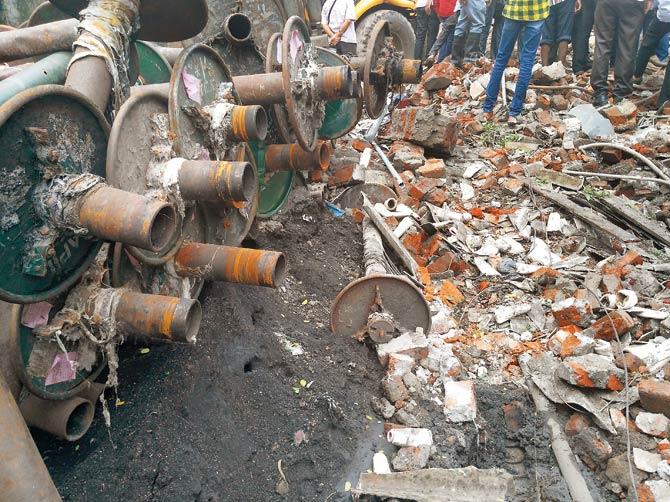Yesterday’s building collapse in Bhiwandi was almost like a replay of a similar disaster there just last week. It highlights how dilapidated structures continue to pose a threat to life across the city

Yesterday’s building collapse in Bhiwandi was almost like a replay of a similar disaster there just last week. But the coincidence is much more than eerie – it highlights how dilapidated structures continue to pose a threat to life across the city, particularly in the powerloom district of Bhiwandi, where illegal looms are a source of constant vibration, rendering the buildings even weaker.
ADVERTISEMENT
 Powerloom parts can be seen among the debris
Powerloom parts can be seen among the debris
It is common to see buildings here with powerlooms on the ground floor and residential quarters in the upper floors. This was the case in both the buildings that collapsed last Sunday and yesterday. “Most of the looms here are illegal. They function 24X7 and the resultant vibration also weakens the building’s structure. But the system has been in place for decades now. The state government should come out with a policy in the matter,” said Rupesh Mhatre, local Sena corporator.
The city is full of crumbling old buildings in urgent need of redevelopment, but in many cases, residents would rather put their lives in danger than vacate their homes.
In this case too, the building was structurally unstable and was in the extremely dilapidated category, and residents were aware of the danger. “The problem here is the lack of trust between the tenants and the owners. Tenants fear that once they allow the building to be demolished, they will never get their house back,” said Shaikh Azar, local Congress corporator.
Also to blame are fraudulent builders who undertake redevelopment projects that take years to materialise, lack of state support in cluster redevelopment, ambiguity in the process of declaring a building dilapidated and skyrocketing rent. A civic official said, “People here say they will die before letting their houses get demolished.”
The redevelopment in this case was also delayed because of a property dispute between the owner Sajjanlal Gupta and his relatives. The owner, a mason, had built Mahadev building himself.
 Subscribe today by clicking the link and stay updated with the latest news!" Click here!
Subscribe today by clicking the link and stay updated with the latest news!" Click here!






